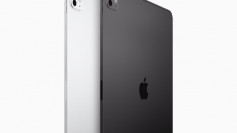The interstellar object 3I/ATLAS has sparked renewed scientific debate after data from NASA's Jet Propulsion Laboratory suggested it was accelerating in ways not fully explained by gravity, prompting Harvard astrophysicist Avi Loeb to caution against dismissing the anomaly.
Loeb, who leads Harvard's Institute for Theory and Computation, said that the latest measurements from engineer Davide Farnocchia at NASA's JPL indicate that 3I/ATLAS, the third confirmed interstellar visitor, exhibited non-gravitational acceleration when it reached its closest point to the Sun on October 29, 2025. "The non-gravitational acceleration might be the technological signature of an internal engine," Loeb wrote, suggesting that the phenomenon could point to more than a natural explanation.
According to NASA data, 3I/ATLAS-currently travelling about 1.36 astronomical units from the Sun (roughly 203 million kilometers)-recorded radial acceleration of 135 km day⁻² and transverse acceleration of 60 km day⁻², exceeding predictions based solely on solar gravity. The findings mirror, in part, the puzzling dynamics once observed in 'Oumuamua, another interstellar visitor that Loeb controversially proposed could have been of artificial origin.
One natural explanation could be the rocket effect, caused by gas jets venting from the comet's surface as it warms. Loeb calculated that such sublimation could cause the object to lose around 10% of its mass over the course of a month. If so, instruments aboard ESA's JUICE mission, along with the Hubble Space Telescope and James Webb Space Telescope, may detect gas plumes or light fluctuations when 3I/ATLAS makes its closest approach to Earth on December 19, 2025.
However, other anomalies have deepened the mystery. Observations from STEREO, SOHO, and GOES-19 satellites show that 3I/ATLAS's brightness increased steeply as it neared the Sun-its luminosity rising inversely with distance to the power of -7.5(±1), a far stronger gradient than expected for a typical comet. The object also appears bluer than the Sun, a hue rarely seen in naturally formed comets that are generally dust-rich and reddish.
Loeb proposed that the blue spectrum could result from ionized carbon monoxide emissions-or potentially from "artificial illumination or a hot propulsion system." While the latter theory has drawn skepticism, he emphasized that science should remain open to all data-driven possibilities. "It is a bad professional practice for theoretical astrophysicists to conclude that the data must be wrong just because they do not have a theoretical explanation for it," Loeb told students at Harvard.
NASA's Tom Statler, a planetary scientist, disagreed with Loeb's suggestion, saying that "3I/ATLAS looks like a comet in just about every way." Many astronomers continue to interpret the acceleration as a product of compositional or structural dynamics rather than technology.



